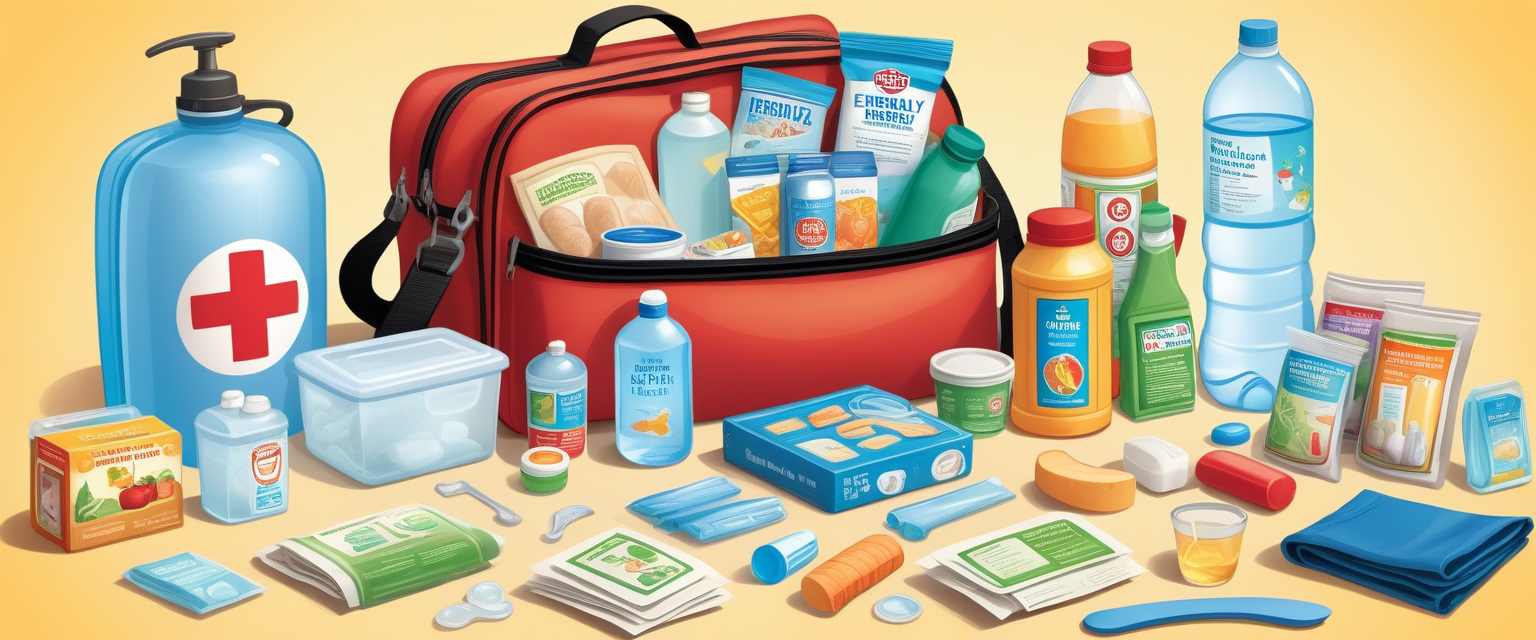
Imagine this: a sudden storm hits, the power goes out, and your child, who thrives on routine and predictability, is thrown into a state of anxiety. For families with autistic children, emergency situations can be particularly challenging. However, innovative technologies and tools are making it easier than ever to prepare and manage these scenarios, ensuring that both children and their families can navigate emergencies with greater ease and confidence.
Understanding the Unique Needs of Autistic Children
Autistic children often face unique challenges that can make emergency preparedness more complex. Sensory sensitivities, communication barriers, and a strong need for routine are just a few of the factors that can exacerbate stress during unexpected events. Understanding these needs is the first step in creating an effective emergency plan. For example, many autistic children may find loud noises and sudden changes in environment overwhelming. This can lead to heightened anxiety and even meltdowns. Additionally, communication barriers can make it difficult for them to express their needs or understand instructions during an emergency.
Innovative Tools for Communication
One of the most significant advancements in emergency preparedness for autistic children is the development of communication tools. Apps like Proloquo2Go and Avaz provide alternative and augmentative communication (AAC) solutions, allowing non-verbal children to express their needs and understand instructions through visual aids and symbols. These apps can be lifesavers in emergency situations where clear communication is crucial. Moreover, wearable devices like the AngelSense GPS tracker not only provide real-time location tracking but also offer two-way voice communication. This ensures that parents can stay connected with their child, providing reassurance and guidance even if they are physically separated during an emergency.
Addressing Sensory Sensitivities
Sensory sensitivities can be a significant hurdle during emergencies. The sudden blare of a fire alarm, the flashing lights of emergency vehicles, or even the chaotic environment of an evacuation center can be overwhelming for an autistic child. Noise-cancelling headphones and earplugs are invaluable tools in such situations. They can help mitigate the impact of loud noises, providing a sense of calm and reducing anxiety. For instance, Vibes Earplugs are specifically designed for children with sensory sensitivities, offering a comfortable fit while effectively reducing background noise.

Help your child manage loud environments with the best noise-cancelling headphones for autism: Vibes Earplugs. These children's earplugs reduce background and ambient noise, making noisy areas more manageable.
Maintaining Routine and Predictability
Autistic children often rely on routines to feel secure. Disruptions to these routines can cause significant distress. In emergency situations, maintaining some semblance of routine can be incredibly soothing. Visual schedules and social stories are excellent tools for this purpose. Apps like Choiceworks allow parents to create customizable visual schedules that can help children understand what to expect during an emergency. Social stories, which are short, descriptive stories that explain social situations and expected behaviors, can also be used to prepare children for potential emergencies. Additionally, having a go-bag with familiar items, such as favorite toys, snacks, and comfort objects, can provide a sense of continuity and comfort. This bag should be easily accessible and ready to grab in case of an emergency.
Building a Support Network
No family should face emergencies alone. Building a support network is crucial for ensuring the safety and well-being of autistic children during crises. This network can include extended family, friends, neighbors, and even local emergency services. Sharing your emergency plan with these individuals and educating them about your child’s specific needs can make a significant difference. Many communities also offer special needs registries where families can provide information about their child’s needs to local emergency responders. This ensures that responders are better prepared to assist in a way that is sensitive to the child’s unique requirements.
Educational Resources and Training
Knowledge is power, and educating yourself and others about autism and emergency preparedness is an essential part of the process. Websites like BrightAutism.org offer a wealth of resources, including articles, guides, and tips tailored to the needs of autistic children and their families. Additionally, consider enrolling in first aid and CPR courses that focus on children with special needs. These courses can provide valuable skills and confidence in handling emergencies. Many organizations also offer workshops and training sessions specifically designed for families with autistic children.
Conclusion
Preparing for emergencies is a daunting task for any family, but it can be especially challenging for those with autistic children. By leveraging innovative technologies, understanding and addressing sensory sensitivities, maintaining routines, building a support network, and utilizing educational resources, families can create a comprehensive emergency plan that meets the unique needs of their children. Remember, the goal is not just to survive an emergency but to navigate it with as much calm and confidence as possible. With the right tools and preparation, you can ensure that your child feels safe, understood, and supported, no matter what challenges come your way. For more tips and resources, visit the
Bright Autism Blog and explore their comprehensive guides and articles. Together, we can create a safer, more inclusive world for our children.
 Imagine this: a sudden storm hits, the power goes out, and your child, who thrives on routine and predictability, is thrown into a state of anxiety. For families with autistic children, emergency situations can be particularly challenging. However, innovative technologies and tools are making it easier than ever to prepare and manage these scenarios, ensuring that both children and their families can navigate emergencies with greater ease and confidence.
Imagine this: a sudden storm hits, the power goes out, and your child, who thrives on routine and predictability, is thrown into a state of anxiety. For families with autistic children, emergency situations can be particularly challenging. However, innovative technologies and tools are making it easier than ever to prepare and manage these scenarios, ensuring that both children and their families can navigate emergencies with greater ease and confidence.






Leave a comment